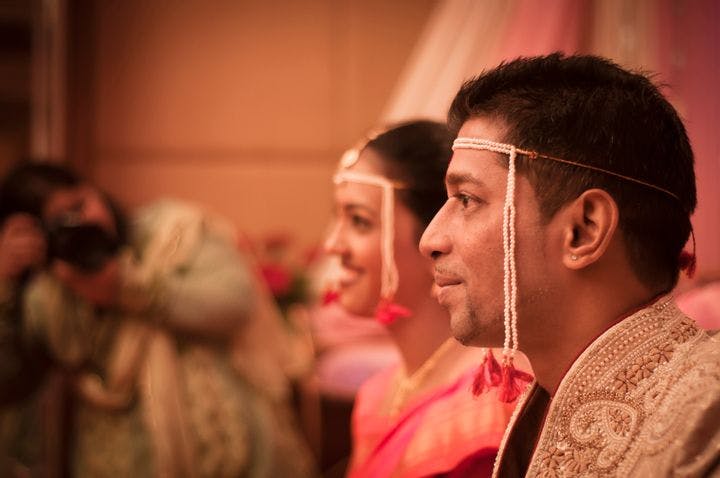Fall 2008
Spouse Hunt
– Renuka Rayasam
eviewer Remuka Rayasam finds Anita Jain "more interested in stringing together amusing anecdotes than in making a sincere attempt at cross-cultural understanding" in her account of her hunt for a suitable husband.
Recently, I described Western dating to an uncle in India who is trying to arrange marriages for his two daughters. After sharing his own troubles finding suitable young men, he ruefully concluded, “Getting married here is one type of hell, but getting married there is another.”
Anita Jain has suffered the worst of both worlds. Fed up with the “emotionally excruciating uphill battle” of dating in New York City, Jain, a world-traveled financial journalist, returned to the country of her parents’ upbringing and her own birth. Marrying Anita chronicles her search for a husband when she moved to Delhi at the age of 32.
Jain, who grew up in the United States, figured that focusing her search for a year in India, where she believed men were more marriage oriented, would improve her odds of finding a husband. Besides meeting potential husbands in flashy Delhi bars and on Indian dating websites, Jain took a second stab at arranging a marriage through an ad her father placed in The Times of India. (She wrote in a 2005 New York Magazine article about the first attempt, which failed but left her more appreciative of the traditional Indian way of finding a mate, who is selected by one’s family.)
Unfortunately, Jain seems more interested in stringing together amusing dating anecdotes than in making a sincere attempt at cross-cultural understanding. Many of the people she encounters in America and India read like caricatures. British journalists are “rapacious conversationalists”; men from Ohio are too earnest. Indian mothers care only about marrying off their daughters, while every unattached female New York professional spends her evenings poring over the “disturbing minutiae” of dating.
Jain’s sharply trained reporter’s eye is best used when she describes the rapid changes juxtaposed with the traditionalism encrusting Indian cities. She had been to Delhi before, but when she returned in 2005, “it was different.” Young, educated, tech-savvy professionals were transforming the ancient city through their demand for Western luxuries. Upscale coffee shops, Italian restaurants, nightclubs, and malls abutted centuries-old forts and open-air bazaars.
Searching for an apartment, Jain was shocked to find that many Delhi landlords didn’t like renting to single women, fearing they might be prostitutes or at least would entertain males. She finally moved into a renovated flat with a view of the city’s ancient landmarks, and herself became another dissonant element of the landscape. “I now marvel at the incongruities and ironies that abound in this country each day,” she writes. “I’m able to install Wi-Fi, allowing me to check e-mail from bed, but my cook, Amma—a small dumpling of a 70-year-old woman—who prepares fresh sabzi, dal, chapatis, and rice each day, extracts the utterly baffling third world rate of $18.20 a month.” Cheap labor makes cooks and cleaners commonplace even in India’s lower-middle-class households.
It’s too bad the insight Jain exhibits when describing modern India falters when she focuses inward. Often, she blames her romantic failures on the overused emigrant’s complaint of neither fitting in here nor there—too liberated for Indian men, but not free enough for American ones. To Western ears, she says, her urge to settle down sounds “atavistic in nature, a throwback to a time when women couldn’t financially support themselves.” Yet her own view of partnership is pretty dismal: She looks down on female friends who married right after college and disdains women who choose marriage over a career.
Jain decided to leave New York for Delhi after attending a Central Park picnic at which she was the only person not part of a couple. Fleeing in tears, she vowed not to become “that proverbial single thirtysomething female propped up at the bar waiting for her ship to come in.” But then she landed in India, only to find that the “razzle-dazzle” new country had created waves of the “young cads” she had hoped to escape. Same bar, different scenery.
* * *
Renuka Rayasam is a Washington, D.C.-based writer. Her work has appeared in Condé Nast Portfolio, INC Magazine, U.S. News & World Report, and Fortune.
Reviewed: Marrying Anita: A Quest for Love in the New India by Anita Jain, Bloomsbury, 307 pp, 2008.
Photo courtesy of Flickr/Kunjan Detroja
